Annotating History: thoughts of an Elizabethan scholar revealed in newly acquired book
Centuries-old annotations by Gabriel Harvey added to University Library collections
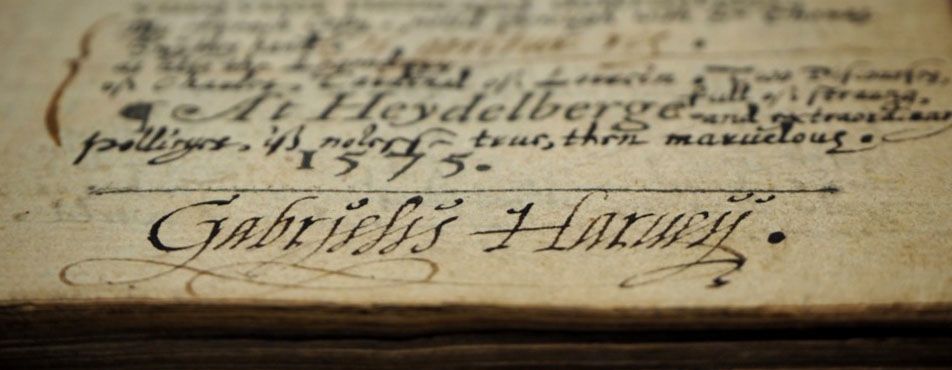
'This hitherto unrecorded book from Gabriel Harvey’s collection offers a unique record of an English analysis of recent French history and extends our knowledge of one of the most conspicuous and fascinating early modern annotators.’
With the generous support of the Friends of the National Libraries , Cambridge University Library welcomes a new addition to their collection of books annotated by Gabriel Harvey, far more copiously annotated with extensive and revealing marginalia than those from his collection already held in the Library.
Written mostly in English, these annotations provide a vivid insight into the mind of an Elizabethan scholar in Cambridge, and an English interpretation of the first phase of the French Wars of Religion.
Born in Saffron Walden in 1551/2, Gabriel Harvey became a notable Cambridge scholar and fellow of Pembroke College, notorious for his copious annotations in the margins of his books. Until this recent discovery, 155 books were known to survive from Harvey's library, fifteen of which are held in Cambridge libraries.
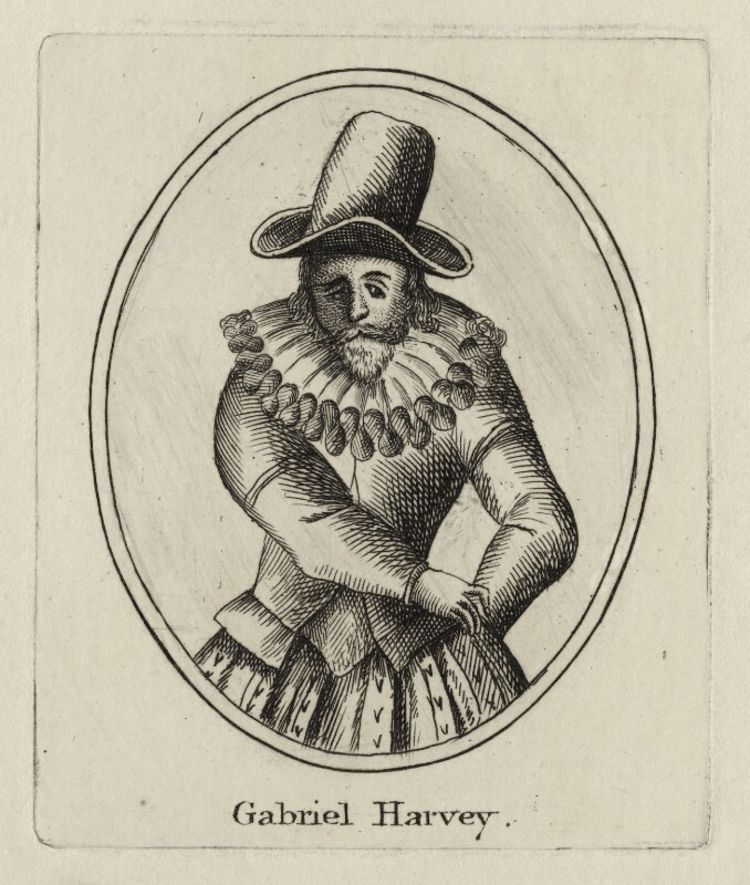
This previously unknown volume was published anonymously in London in 1575 under the title A mervaylous discourse vpon the lyfe, deedes, and behaviours of Katherine de Medicis.
The work was a bestseller in Europe, purporting to expose the perverse character and wicked practices of Catherine de’Medici, or the ‘Black Queen’ as she has sometimes been called. While this printed work is not especially rare, Harvey’s marginal comments in this particular copy make it an exceptional item.
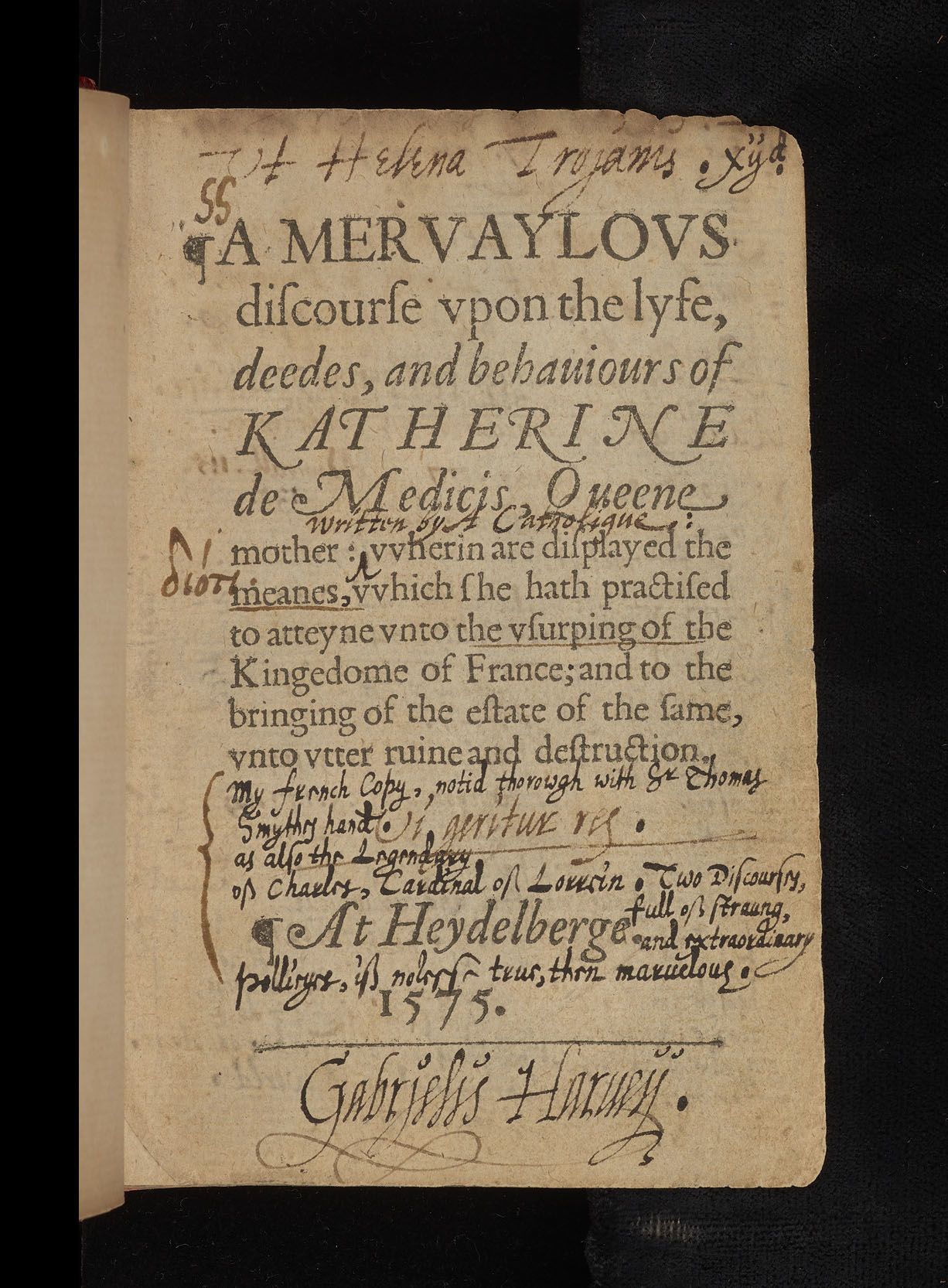
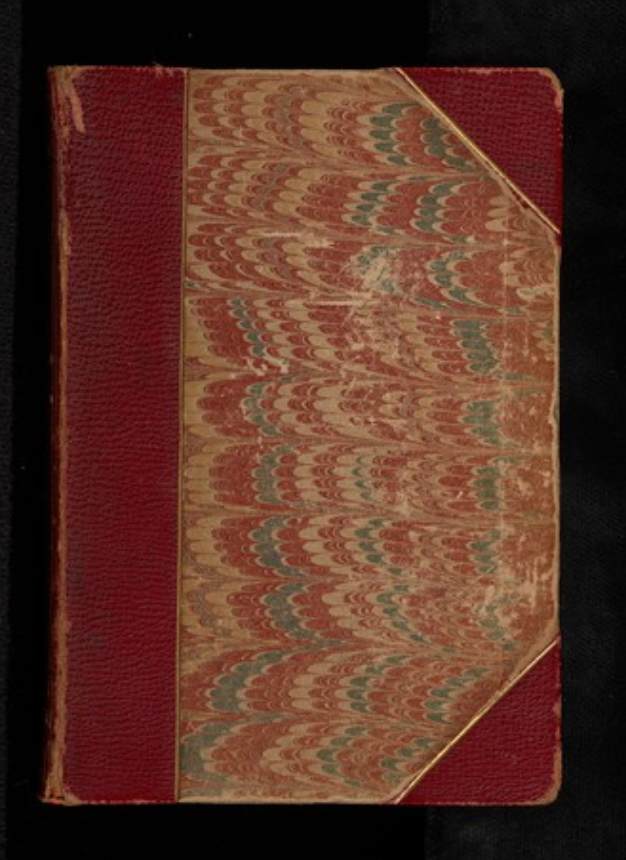
Images of the book from the Cambridge Digital Library.
Images of the book from the Cambridge Digital Library.
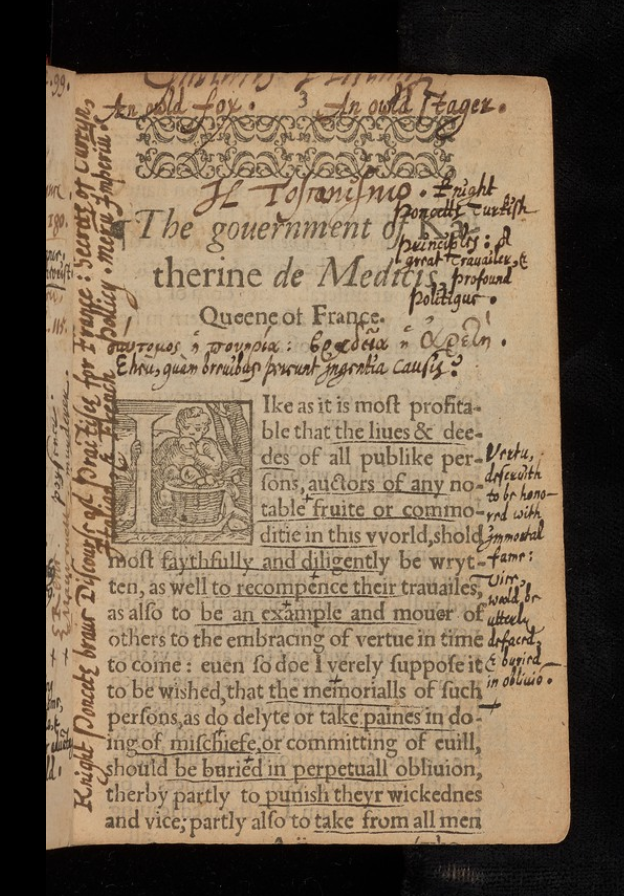
Images of the book from the Cambridge Digital Library.
Images of the book from the Cambridge Digital Library.
“The text offers a blow-by-blow account of ‘the pernicious and wicked practices of the Queene’, emphasising her ruthlessness, her willingness to exploit religious divisions to increase her power, and the threat that her machinations pose to the realm of France.”
Dr Jason Scott-Warren
Investigations by Dr Jason Scott-Warren of Cambridge University’s Faculty of English reveal that Harvey’s notes are ‘darkly appreciative’, showing his relish for acts of ‘deepe and profound dissimulation’. In one annotation for example, he described the 1572 St Bartholomew’s Day Massacre of French Protestants as a ‘Comicotragoedia’ (a tragicomedy), capturing the ‘pleasure & delight’ in grisly death and torment that the author ascribes to the Queen. Like many readers in the period, Harvey had a set of private symbols with which he marked up the text, including ‘J.C. (‘jurisconsultus) for legal affairs and astrological symbols such as Mars signifying war.
‘
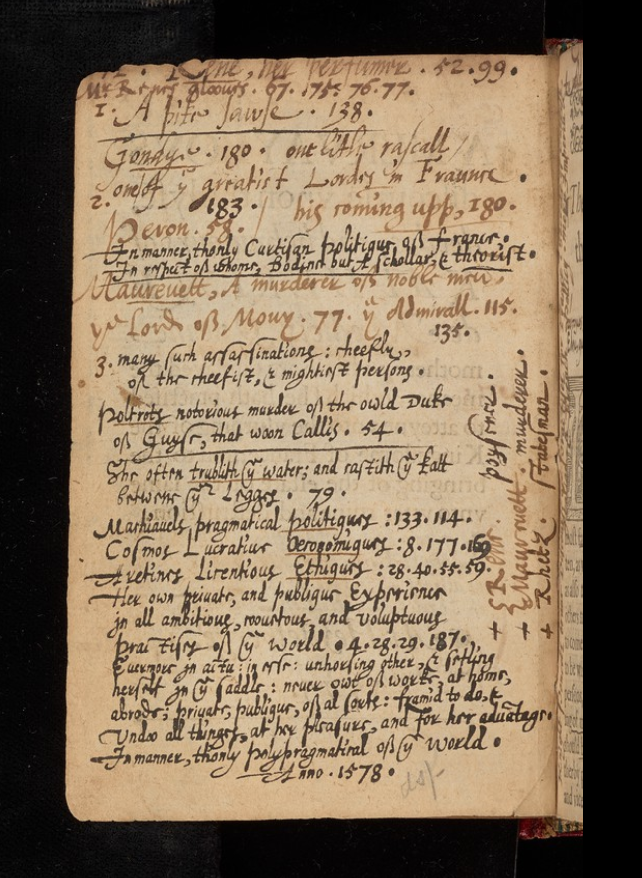
‘He displays a kind of horrified admiration for Catherine’s unceasing villainy’
Analysis of Harvey’s marginalia and its importance for the history of reading was sparked by Anthony Grafton and Lisa Jardine’s seminal article ‘“Studied for Action”: How Gabriel Harvey Read his Livy’ (1990).
Among other things, this study revealed that early modern reading was often a communal and political activity, rather than a solitary and private one.

Fourteen of Harvey’s books have been digitised and transcribed on the ‘Digital Bookwheel’ of the Archaeology of Reading project, which uses digital technologies ‘to enable the systematic exploration of the historical reading practices of Renaissance scholars nearly 450 years ago’ and Cambridge is collaborating with the project around this new acquisition. This latest addition has also been digitised and is freely available to everyone on Cambridge University Library's Digital Library. It is hoped that it will extend conversations surrounding marginalia, reading habits and the thoughts of Elizabethan scholars.

